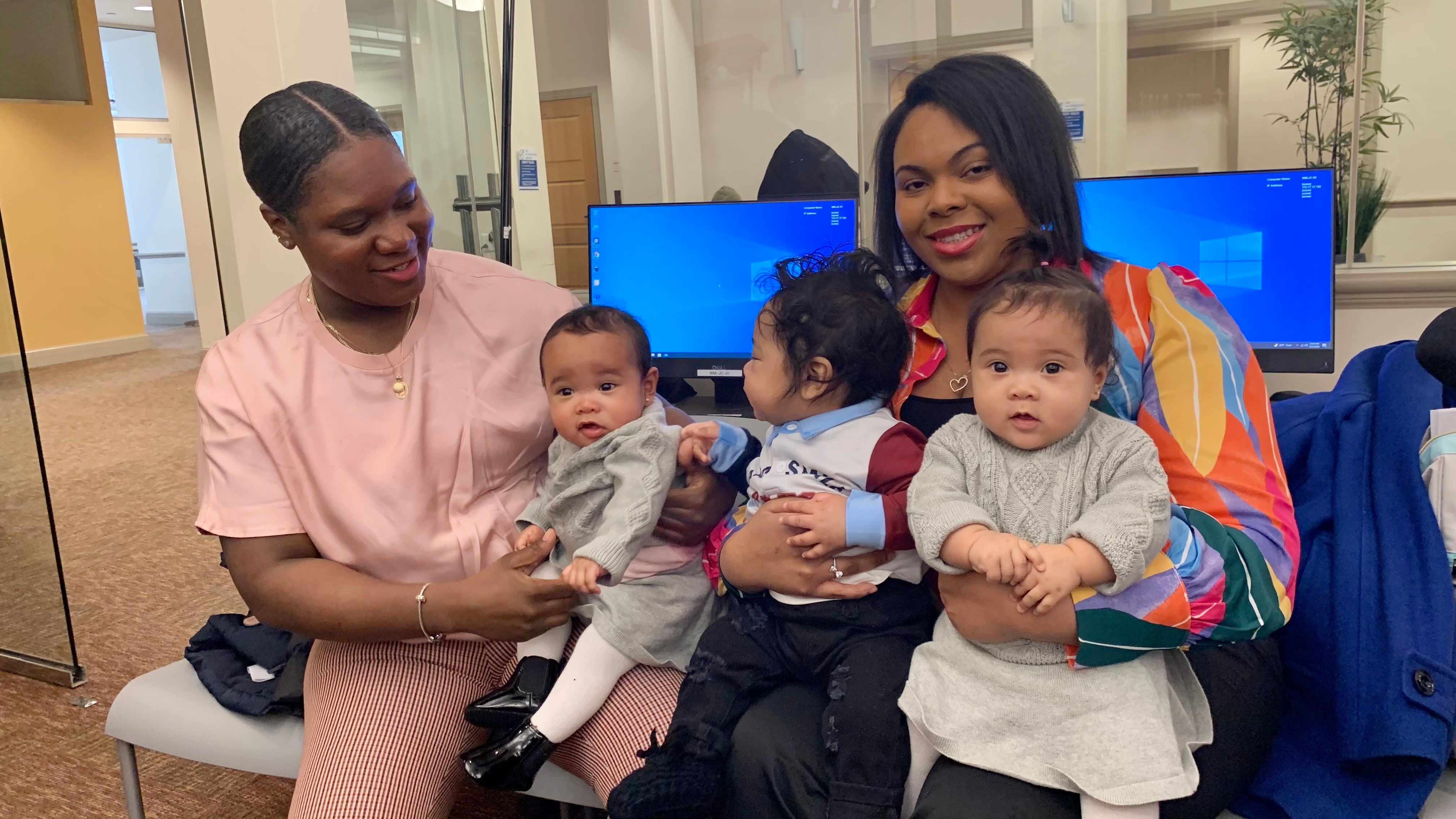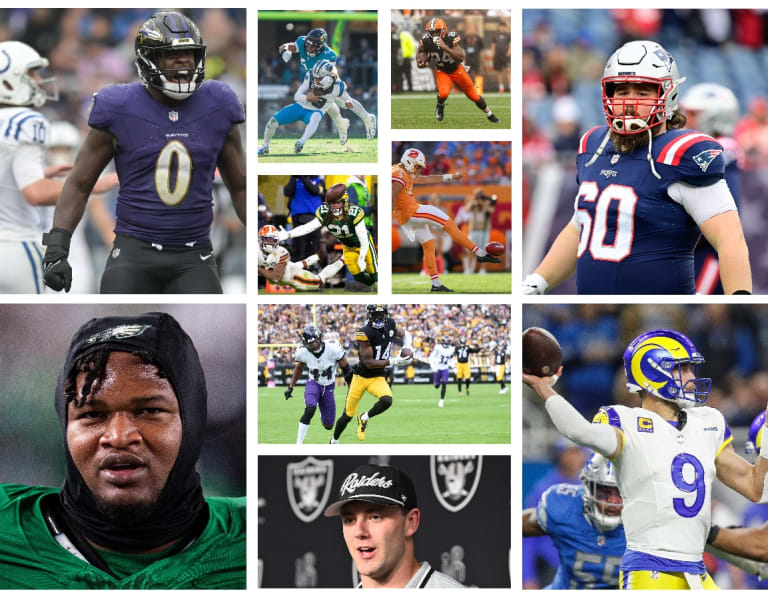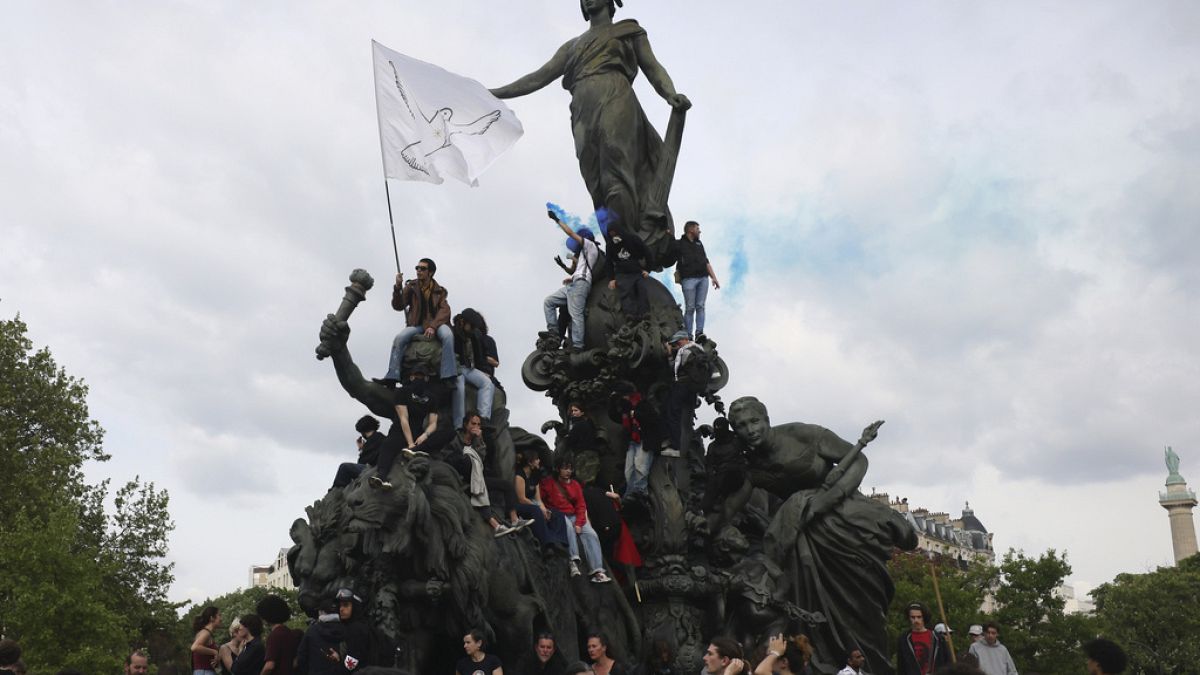Business
Column: A Trump judge eviscerates a pro-worker regulation at the request of big employers

The Biden administration’s support of worker rights and union organizing has become a byword.
President Biden has restored the National Labor Relations Board to its traditional role as protector of collective bargaining rights. He walked the United Auto Workers picket line during its ultimately successful contract negotiations with the Big Three automakers.
He has nominated and renominated the outstanding worker advocate Julie Su as secretary of Labor. And he swept a gaggle of Trump-appointed union-busters and anti-union ideologues out of a key federal agency responsible for ruling on disputes involving government union contracts.
As major companies have consciously invested in building brands…as the cornerstone of their business strategy, they have also shed their role as the direct employer of the people responsible for providing their products and services.
— David Weil, “The Fissured Workplace”
But now he has run up against a brick wall of hard-right anti-union ideology put in place by his predecessor: another Trump-appointed ultra-partisan federal judge using his perch in an obscure courthouse to make policy for the entire nation.
We’re talking about J. Campbell Barker of the U.S. District Court of Tyler, Texas. Last week Barker, ruling in a lawsuit brought by the U.S. Chamber of Commerce and 12 other business lobbies, invalidated an NLRB rule aimed at broadening the standard by which big corporations could be held jointly responsible for the welfare and unionization rights of workers employed by their franchisees.
Barker was appointed by Trump in 2019 after a career as a Texas state lawyer writing briefs to restrict voting rights and LGBTQ+ rights, supporting Trump’s travel ban on Muslim-majority nations and attacking access to contraceptives and abortion.
On March 8, he ruled that the NLRB’s joint-employer regulation, issued in October, was so broad that it would “treat virtually every entity that contracts for labor as a joint employer.”
Many workers whose wages or workplace conditions were effectively dictated by big companies that fobbed their responsibilities onto franchise owners would consider that anything but a drawback.
The NLRB is certain to appeal Barker’s decision, probably to the New Orleans-based 5th Circuit Court of Appeals, which has set its own standard for far-right judicial overreach. The board had earlier argued that Barker shouldn’t have taken the lawsuit in the first place, because by law NLRB final rules can be appealed only to the federal appeals court in the District of Columbia. Barker rejected that argument.
Big business has been fighting efforts to broaden legal interpretations of joint-employer status for decades. The plaintiffs in this lawsuit included lobbies for builders, restaurants, hotels and convenience stores.
Many of them base their business models on their ability to control workplace conditions from afar while pushing legal liability for labor violations onto franchise owners, whom they often describe (inaccurately) as small mom-and-pop operations just scraping by.
Among the plaintiffs is the Chamber of Commerce of Longview, Texas. Longview is a small city in the east Texas oil patch; presumably its chamber was recruited because the plaintiffs figured that its presence would give them standing to sue in the federal district court in Tyler, which has two judges, both appointed by Donald Trump, including Barker. They got their wish.
Another plaintiff is the Coalition for a Democratic Workplace. You might suppose that an organization bearing that name represents the whole panoply of business stakeholders, from fast-food workers to corporate employers, but no.
“Democratic” here means much the same thing as it did when “German Democratic Republic” signified a Communist dictatorship in East Germany, which was anything but a democratic workers’ paradise. The coalition comprises 600 employer groups “joined by their mutual concern over regulatory overreach by the National Labor Relations Board.”
Now let’s turn to the lawsuit itself. If you surmise that its opening brief, filed on Nov. 9, bristled with disinformation, you would be right.
The brief stated that the NLRB “rammed” the rule changes through on the claim that “the 90-year-old National Labor Relations Act has been misinterpreted for most of its existence.” (Actually, the board is only 88 years old.)
A couple of points here. First, it’s a little unclear what the plaintiffs meant by “ramming through” the new rule. The NLRB first proposed the rule in September 2022, and didn’t promulgate it until 13 months later. In the interim it put the proposal out for public comments, of which it received 13,000.
The plaintiffs implied that the NLRB’s joint-employer rules have been static since the board’s founding in 1935. Nothing could be further from the truth.
The standard came before the Supreme Court more than once, starting in 1964. The board amended it, sometimes narrowing and sometimes expanding its definition of joint employer, in 1982, 2002, 2007, 2018 and 2020, before the latest version was issued in October.
The plaintiffs wring their hands over the fact that the board reversed a rule that it “promulgated just three years ago.” You might ask yourself: Hmm, what changed in Washington between 2020 and 2023?
If you guessed that the Trump administration was turned out of office and replaced by the Biden administration, well done.
The latter gave the NLRB a Democratic majority, just as the former had given it a Republican majority. Presidents have the power to do that and most have done so when they were succeeding a president of the other party. So when the plaintiffs depict the board as an unchanging entity that reversed itself, they’re lying, possibly in the hope that a judge will be too stupid to notice their sleight of hand. Or too partisan to care.
But they can’t avoid explicitly stating their true concern with the joint-employer rule: The rule threatens employers with “billions of dollars in liability and costs.”
Defining joint-employer responsibilities has become more important in recent decades as more businesses turn to the franchise model, which gives fast-food, hotel and retailing behemoths plausible deniability over how their front-line workers are treated and paid.
“As major companies have consciously invested in building brands … as the cornerstone of their business strategy,” labor expert David Weil wrote in his 2014 book “The Fissured Workplace,” “they have also shed their role as the direct employer of the people responsible for providing their products and services.” The trend, Weil wrote, encompasses hotel maids, cable installers, commercial janitors and merchandise pickers in Amazon warehouses — all are actually on the payroll of third-party employment firms.
(By the way, Biden nominated Weil in 2021 to a high-level position at the Department of Labor, but the nomination was killed by opposition from Republicans and Big Business.)
In recent years, the principal target of joint-employer cases at the NLRB has been McDonald’s. That’s unsurprising, since with more than $119 billion in overall international sales it’s the largest franchisor in the world.
The Obama-era NLRB brought a massive case against the company and 29 franchisees in 2014, which turned into what was regarded as the biggest case the board ever instituted, and the longest. The main issue was whether the company had participated in — in fact, helped to run — a nationwide attack on the Fight for $15 union campaign for a higher minimum wage at its restaurants.
Then-NLRB general counsel Richard Griffin alleged at the outset that the franchisees fired, suspended, cut work hours, threatened, spied on and interrogated employees involved in the union campaign, all of which he interpreted as illegal responses to union organizing.
Administrative Law Judge Lauren Esposito cited evidence that the anti-union response was “formulated and implemented” from McDonald’s headquarters in Chicago and that the company provided franchisees with “suggested policies” and legal training in labor relations — so much so that the company was properly regarded as the franchise workers’ joint employer.
By the time Esposito prepared to rule, Trump was president. He replaced Griffin with Peter Robb, whose record as an anti-labor lawyer was well nigh unassailable and whose hostility to the joint-employer rule was manifest. Before Esposito could rule, Robb settled the cases against the franchisees by ordering back pay for the workers who were fired or had their hours cut. But the settlements didn’t involve McDonald’s Corp., which therefore skated on the joint-employer issue.
Esposito rejected the settlements, but she was overruled by the NLRB’s new, Republican majority. The sole dissent came from Lauren McFerran, an Obama appointee who was the only Democrat then on the board.
“A finding of joint-employer status,” she wrote, “would have important collateral consequences for McDonald’s, in both unfair labor practice proceedings involving its franchisees and … if workers employed at McDonald’s franchisees sought to organize (that is, unionize).”
In other words, the Trump NLRB moved heaven and earth to keep McDonald’s from being declared a joint employer.
McFerran is now chair of the NLRB, presiding over a 3-1 Democratic majority. (One seat on the five-member board is vacant.)
The NLRB’s joint-employer rule would bring millions of workers — typically low-wage workers without health or retirement benefits and virtually no job security — under the umbrella of their well-heeled ultimate employers. It’s possible, if not certain, that they would see an improvement in their working lives, through better wages and more opportunity to unionize.
Even big franchisees or labor brokers don’t have to care about their public image — most customers don’t even know they exist. But McDonald’s, Marriott, Walmart and Amazon have a lot to lose in public esteem by getting tagged as an abuser of workers.
If the NLRB had its way, they would no longer be getting away with shedding their responsibilities. Let’s hope that Judge Barker’s ruling is a temporary obstacle to making the world work better.

Business
Fast food operators rushing to use AI in the wake of minimum wage hikes

It didn’t take long for Harshraj Ghai to respond to the impact of California’s new $20 an hour minimum wage for his 3,700 fast-food employees.
Ghai and his family operate 180 Burger Kings, Taco Bells and Popeyes chicken restaurants across the state, and one of the first things they did after the law took effect April 1 was to start capping workers’ hours to avoid overtime pay. Also, they’re closing some outlets a little earlier, and opening others a bit later to avoid paying workers for less profitable periods.
But the biggest thing Ghai and his family are doing does not directly involve workers at all: They’ve speeded up and expanded their use of technology, especially AI.
Right now, they’ve moved up by several years their plans to install self-service kiosks at all of their locations, including 25 out of state.
But what has Ghai most hopeful about offsetting the higher labor costs is to have AI handle customers’ orders made at the drive-through. He’s testing the machine-learning system this month at a few locations and hopes to roll it out company-wide by this time next year.
Drive-throughs of course are quintessentially California, with its car culture and fast lifestyle. And now, with AI coming on to the scene in a big way, the state is emerging as ground zero for what many analysts see as the next big thing in the world of fast food and drinks.
Not that AI-led drive-through is quite ready for prime time. As it is today, the system can have trouble with people’s accents and ambient noise, making it hard to recognize speech and translate it into text. Pilot programs run by McDonald’s and others thus far often have backed up the AI technology with an employee, like the Wizard of Oz man behind the curtain. The unseen worker from as far away as the Philippines monitors and sometimes intervenes to complete an order if AI falters.
Even so, Ghai thinks that once the kinks are worked out, it’ll be a godsend for fast-food operators like him.
“It has the potential of being the most impactful,” says Ghai, 39, whose Indian immigrant father, Sunny, started the family business in 1998 by buying a failing Burger King in San Jose, where he was an assistant manager.
What pushed the envelope for businesses like the Ghais’ was California’s sudden 25% hike in the minimum wage for the fast-food industry’s half-million or so workers in the state.
To deal with the big increase in labor costs — which average about one-third of a fast-food store’s sales — many of the affected business owners immediately jacked up menu prices.
Ghai said he’s raised prices overall this year by just 2%. But that’s not been the norm. By the middle of last month, at many franchises across the state — from Jack in the Box to Chipotle to Starbucks — consumers on average were paying a mid- to high-single-digit percentage more than just a month or two earlier, according to a survey by BTIG, the investment banking and research firm.
Relatively few appear to have resorted to layoffs, in part because many were already staffed at bare-bones levels. So to hold the line on further price increases, a growing number of fast-food operators are now racing to install as much automation as they can afford.
Perhaps the most visible and soon to be widely adopted are all kinds of kiosks for ordering food. The self-service machines have been around for more than a decade, but franchise owners such as Michaela Mendelsohn resisted the move for many years.
“We just didn’t want to force our customers to use technology. We thought the personal contact was important,” said Mendelsohn, who has six El Pollo Loco restaurants in Los Angeles and Ventura counties.
But when the industry’s basic pay rose to $20 an hour, she said, that amounted to $180,000 in additional labor costs a year per store. Within a month of the wage hike, Mendelsohn bought two standing kiosks for each of her six restaurants. That set her back $25,000 per store, for two screens, installation, software and other related costs. One of the two machines accepts cash, which she said was needed for her blue-collar customers.
An L.A. Carl’s Jr. restaurant. In California, CKE Restaurants, the owner and franchisor of Carl’s Jr. and Hardee’s, appears to be ahead of the pack on the use of AI technology.
(Los Angeles Times)
Mendelsohn figures that the kiosks might save five hours of labor a day. By that estimate, the machines would pay for themselves within a year and shave about 20% of the increased cost from the latest minimum wage increase. “We’re chipping away at it,” she said.
Self-service kiosks are ubiquitous in Western Europe, but they’re in fewer than 20% of fast-food establishments in the U.S., says Perse Faily, chief executive at Los Angeles-based Tillster, one of earliest providers of kiosks and other digital platforms for restaurants.
The COVID-19 pandemic pushed the trend in the U.S., she said, and now in California, “We’re seeing this complete sea change in thinking, ‘How do I address my labor costs?’”
Kiosks may be appealing in that they can not only save on labor, but also drive higher sales. Unlike people, the programmed machines are always trying to “upsell,” never forgetting to ask customers whether they want a drink with their meal or something else to go along with their entree.
Faily, Tillster’s CEO since late 2007, wouldn’t disclose the company’s sales increase, but said its new customers include Burger King and Popeyes, and that employment at the firm is up 75 from a year ago, to 340 currently. “The minimum wage increase has completely changed the landscape,” she said.
Other computer-guided upgrades are also aimed at cutting labor costs, from automatic avocado peelers and dishwashers to robotic arms that flip burgers and turn over fryer baskets.
But return on investments, while helpful for the bottom line, don’t do enough to offset burgeoning payroll expenses. So relatively few fast-food operators, for now, are making major investments in robotics and similar mechanical devices.
AI, on the other hand, looks like it could be a game-changer.
The pandemic boosted drive-through traffic at fast-food places to about 80% of sales from two-thirds pre-COVID, said Peter Selah, a restaurant industry analyst at BTIG. And AI order-taking opens the possibility of speeding up the drive-through process, increasing sales and reducing significant labor overhead.
But analysts say it’s likely to be at least a year or two, maybe longer, before AI-led drive-through reaches a consistent and high enough level of accuracy where companies are comfortable with it. Tests have often left frustrated customers demanding to talk to a live person rather than a bot, according to various accounts.
Major fast-food brands were reluctant to discuss their AI drive-through efforts. Nationally, McDonald’s has been out in front, using an IBM-developed system. A spokesperson would only say that McDonald’s “continues to gather learnings from the roughly 100 pilot restaurants testing automated order taking technology in the U.S. We expect to share more later this year.”
In California, CKE Restaurants, the owner and franchisor of Carl’s Jr. and Hardee’s, appears to be ahead of the pack on the technology, but like other chains, including Taco Bell, Burger King and El Pollo Loco, CKE declined to comment.
Analysts, however, say none of the AI platforms have reached more than 85% success in which human intervention isn’t needed.
“The hardest part is when you have people with accents, from different states and immigrants. It’s challenging,” said Danilo Gargiulo, senior analyst covering restaurants for Bernstein, an investment and research firm.
Still, Gargiulo sees the day when AI will speed up the drive-through line, boosting sales and consumer satisfaction. “Right now the drive-through time is slowed by repeated orders,” he said. With accurate AI speech recognition and faster, clearer communication to the kitchen staff, he said, you can cut as much as 90 seconds off what typically takes 5½ minutes for a customer to complete a drive-through purchase.
That’s what Ghai is betting on.
He says his initial investment for the AI drive-through technology, purchased from San Carlos-based Presto, is about $10,000 per store. Ghai estimates that if he can get it to perform at 90%, a store employee might have to step in to take over an order just three times every hour, freeing up the worker to do other tasks.
The AI system is getting better as it gathers more data, he said, and it’ll soon be able to communicate in Spanish. Add in mobile apps and loyalty programs, and AI has the potential to give fast-food customers a faster and more personalized service. And of course there’s the labor saving part: Ghai thinks the AI drive-through could reduce 10 to 15 hours of wages a day, and double that where he has two human order takers.
“Our goal isn’t to get rid of people. We’re in the people business at the end of the day,” he said. At the same time, Ghai added, over the long haul, “we’ll have fewer people.”
Business
Video: ‘Lack of Further Progress’ on Inflation Keeps Interest Rates High

new video loaded: ‘Lack of Further Progress’ on Inflation Keeps Interest Rates High
transcript
transcript
‘Lack of Further Progress’ on Inflation Keeps Interest Rates High
Jerome H. Powell, the Fed chair, said that the central bank needed “greater confidence” that inflation was coming down before it decided to cut interest rates, which are at a two-decade high.
-
Today, the F.O.M.C. decided to leave our policy interest rate unchanged and to continue to reduce our securities holdings, though, at a slower pace. Our restrictive stance of monetary policy has been putting downward pressure on economic activity and inflation, and the risks to achieving our employment and inflation goals have moved toward better balance over the past year. However, in recent months, inflation has shown a lack of further progress toward our 2 percent objective, and we remain highly attentive to inflation risks. We’ve stated that we do not expect that it will be appropriate to reduce the target range for the federal funds rate until we have gained greater confidence that inflation is moving sustainably toward 2 percent. So far this year, the data have not given us that greater confidence. In particular, and as I noted earlier, readings on inflation have come in above expectations. It is likely that gaining such greater confidence will take longer than previously expected.
Recent episodes in Business
Business
Global film and TV production down 7% this year following Hollywood strikes, report says

Global film and TV production was down 7% during the first quarter of 2024 compared with the previous year, according to a Wednesday report by film and TV tracking company ProdPro that illustrates Hollywood’s slow return to work in the wake of the writers’ and actors’ strikes.
ProdPro, a relatively new firm that follows film and TV production around the world, also found that production volume and spending levels were 50% lower over the last 12 months compared with the same period a year ago.
In the aftermath of the dual strikes — which largely halted film and TV shoots for about six months straight — entertainment workers and companies alike seemed eager to get back to business and resume filming immediately. But production has not rebounded as quickly or strongly as many had hoped, particularly in the Los Angeles area.
The recent decline in production continues a larger downward trend dating back to late 2022, when the entertainment industry began to feel the consequences of studios’ overspending during the streaming wars of the early 2020s. Since then, companies have been cutting back on staff and content in an effort to make up for their financial losses.
During the first week of 2024, 73 English-language scripted film and TV projects were actively shooting in the United States, compared with 136 in the first week of 2022, per ProdPro. By late March 2024, that number had risen to 135 — still lagging behind 2022’s total of 157.
Globally, 148 scripted TV productions began filming in the first quarter of 2024, compared with 140 during the same stretch in 2023; while only 165 feature films began shooting in the first quarter of 2024 compared with 216 in 2023, according to ProdPro.
While production for the big and small screen has been sluggish this year so far, ProdPro reported that “a significant number” of TV series and feature films are currently in development and on track to start shooting in the third and fourth quarters of 2024.
The ProdPro study notes that “studios are presumed to be holding back in part because of the uncertainty around the ongoing” contract campaigns by the International Alliance of Theatrical Stage Employees and Teamsters Local 399 — two labor unions advocating for Hollywood crew members.
On Monday, IATSE entered general contract negotiations with the Alliance of Motion Picture and Television Producers, which represents the major studios such as Disney, Warner Bros. and Netflix. This is the most critical phase of negotiations that could result, depending on how talks go, in a tentative deal or another work stoppage.
General negotiations are expected to cover issues related to pay, pension and health benefits, work-life balance, job security, streaming residuals and artificial intelligence.
“It’s civil,” Matthew Loeb, IATSE’s international president, previously told The Times about the current stage of bargaining. “Everybody wants to avoid a strike. But that’s not to say that it’s a foregone conclusion that they’ll meet our demands.”
-

 Education1 week ago
Education1 week agoVideo: Dozens of Yale Students Arrested as Campus Protests Spread
-

 News1 week ago
News1 week agoLarry Webb’s deathbed confession solves 2000 cold case murder of Susan and Natasha Carter, 10, whose remains were found hours after he died
-

 World7 days ago
World7 days agoHaiti Prime Minister Ariel Henry resigns, transitional council takes power
-

 Politics1 week ago
Politics1 week agoFetterman hammers 'a–hole' anti-Israel protesters, slams own party for response to Iranian attack: 'Crazy'
-

 World1 week ago
World1 week agoUS secretly sent long-range ATACMS weapons to Ukraine
-

 News7 days ago
News7 days agoFirst cargo ship passes through new channel since Baltimore bridge collapse
-

 World1 week ago
World1 week agoTurkey’s Erdogan meets Iraq PM for talks on water, security and trade
-

 World1 week ago
World1 week agoSpanish PM Pedro Sanchez suspends public duties to 'reflect'














